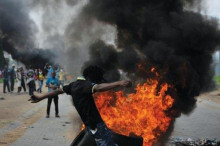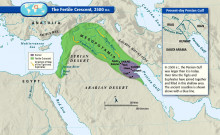The World in 2015 – and Beyond

As Yogi Berra famously said, “It’s difficult to make predictions, especially about the future.” But isn’t that what we all want to know? What the future comports impacts our personal lives, our families and even our fortunes.
In the national security realm, we all wonder what the future will hold for the security and prosperity of the United States. There are an overwhelming number of sources inside and outside of government who “hold forth” on what they think the future will hold.
Often the art of all this is picking and choosing among those multiple pundits and focusing on the source – or sources – that hold the most promise of getting it right. For me – and for many my professional circle, that source is The National Intelligence Council (NIC). The NIC is the parent agency for the 16 components (CIA, DIA, NSA etc.) United States intelligence enterprise.
A vast amount of what these agencies do is highly classified and not releasable to the rest of us. But some of it is and the NIC packages the collected analysis of the eighty billion dollar a year United States intelligence enterprise and publishes it in its Global Trends series.
The National Intelligence Council has released their comprehensive quadrennial report forecasting global trends that have a major impact on our world, “Global Trends 2030: Alternative Worlds.” In shorthand – GT2030. Global Trends 2030 helps us have an informed and well-nuanced view of the future. This is not as easy as it sounds, for, as John Maynard Keynes famously said in 1937: “The idea of the future being different from the present is so repugnant to our conventional modes of thought and behavior that we, most of us, offer a great resistance to acting on it in practice.”
NIC has been in existence for over three decades and represents the primary way the U.S. intelligence community (IC) communicates in the unclassified realm. Initially a “wholly-owned subsidiary” of the Central Intelligence Agency (CIA), the NIC now works directly for the director of national intelligence and presents the collective research and analysis of the entire IC, an enterprise comprising 16 agencies with a combined budget of well over $80 billion. In a sentence: There is no more comprehensive analysis of future trends available anywhere, at any price. It’s not an overstatement to say this 160-page document represents the most definitive analytical look at the future security environment.
Stay tuned to this blog for more on the future….










